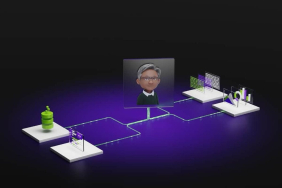Last month, OpenAI launched its new series of artificial intelligence models known as o3, focusing on advanced reasoning capabilities. During a live demonstration, the company revealed benchmark results based on its internal evaluations. Among the reported scores, one in particular captured attention: the large language model (LLM) achieved an impressive 85 percent on the ARC-AGI benchmark, surpassing the previous best score by a significant 30 percent. Notably, this score correlates with the performance of the average human test-taker.
OpenAI Achieves 85 Percent on ARC-AGI Benchmark
Despite the high score on the ARC-AGI test, the question remains whether this indicates that the o3 model possesses human-like intelligence. Answering this question would be more straightforward if OpenAI had made the model publicly available for independent testing. The lack of information regarding the model’s architecture, training methods, and datasets complicates any definitive claims about its capabilities.
Nonetheless, there are several insights gleaned about OpenAI’s reasoning-oriented models that provide some perspective on what to anticipate from the upcoming LLM. Currently, the architecture and framework of the o-series models do not exhibit significant changes; instead, they have been fine-tuned to enhance their performance.
For example, the o1 series employed a technique known as test-time compute, which allowed the AI to allocate additional processing time for questions and created a workspace for testing theories and correcting errors. Similarly, the GPT-4o model was essentially a refined version of the GPT-4.
It is unlikely that OpenAI undertook major architectural changes with the o3 model, particularly since it is reportedly developing the GPT-5 AI model, which may be introduced later this year.
Focusing on the ARC-AGI benchmark, it comprises a series of grid-based pattern recognition tasks that necessitate reasoning and spatial comprehension to solve. Successfully solving these tasks likely requires a large and high-quality dataset concentrated on reasoning and logic.
However, if the challenge were so straightforward, earlier AI models would have also achieved high scores. The previous record was 55 percent, notably lower than the o3’s 85 percent score, indicating that new refinement techniques and algorithms have been integrated to improve the model’s reasoning capabilities. The full scope of these enhancements remains unclear pending official technical disclosures from OpenAI.
It is essential to note that the o3 model is not expected to have reached artificial general intelligence (AGI) or human-level cognition. If this were achieved, it would likely alter OpenAI’s partnership with Microsoft, which is expected to conclude once the company develops models classified as AGI. Furthermore, many AI specialists, including Geoffrey Hinton, a prominent figure in the field, have consistently asserted that achieving AGI is still several years away.
Given the magnitude of AGI, OpenAI would likely publicize such an achievement rather than offer ambiguous hints. A more plausible scenario is that the o3 model has enhanced its pattern-based reasoning abilities through either an expansion of training data or adjustments to its training techniques. Such improvements, as noted in a PTI report, indicate progress but do not necessarily equate to an overall increase in the model’s intelligence.






